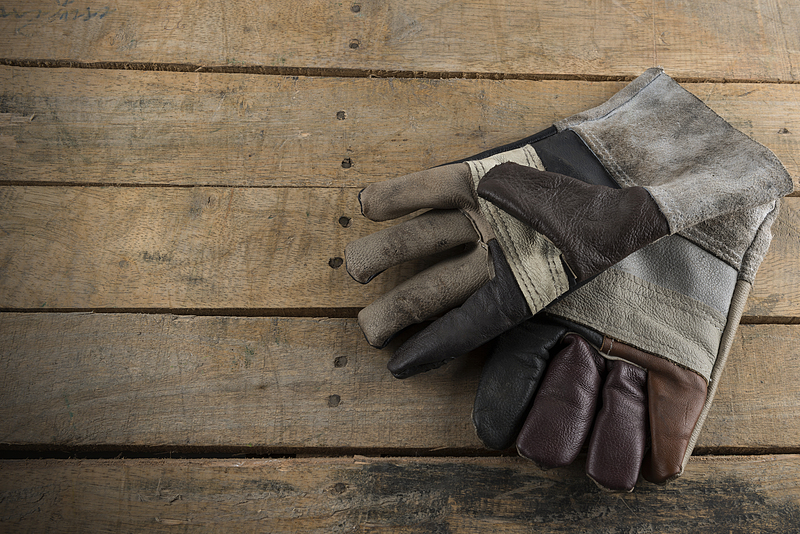Packing and Transport Tips for Your Bed and Mattress on Moving Day
Relocating to a new home is an exciting adventure, but it also brings several logistical challenges, especially when it comes to packing and transporting your bed and mattress on moving day. These large, bulky items require special care to ensure they arrive at your new place clean, undamaged, and ready for a restful night's sleep. Whether you're hiring professionals or doing it yourself, understanding the right methods and precautions can make all the difference.
Why Proper Bed and Mattress Packing Matters
Your bed and mattress aren't just pieces of furniture--they are essential investments in your comfort and well-being. Improper handling during a move can lead to:
- Tears, punctures, or stains on your mattress cover.
- Bent or broken bed frames, especially with wooden or metal slats.
- Dust, dirt, and allergens collecting on your mattress during transport.
- Difficulty setting up your bed at your new home due to missing or damaged hardware.
To prevent these issues, use our comprehensive tips for packing and transporting your bed and mattress safely and efficiently.

Preparing Your Bed and Mattress for the Move
1. Disassemble Your Bed Frame
Start by stripping your bed down to its components. Remove all bedding, pillows, and linens and pack them separately. Then, carefully disassemble the bed frame, following the manufacturer's instructions if available. Keep these steps in mind:
- Remove the mattress and box spring (if applicable).
- Detach slats, side rails, and headboard/footboard with appropriate tools.
- Keep screws, nuts, and bolts in a labeled plastic bag, and tape it to the main bed frame or store it in a clearly marked box.
Taking time to disassemble the bed frame properly prevents scratches and breakage and simplifies the reassembly process at your new home.
2. Clean and Inspect Your Mattress and Bed Frame
Before you pack, give your bed and mattress a thorough cleaning.
- Vacuum the mattress to remove dust and allergens.
- Spot-clean any stains with approved cleaning agents.
- Wipe down the bed frame components, especially if they're made of wood or metal.
- Check for any loose screws or damage and address it before moving.
Ensuring everything is clean prevents transporting dirt or pests to your new space and guarantees your setup is as fresh as possible upon arrival.
3. Gather Packing Materials
Having the right supplies is crucial. Here's a quick checklist for packing your mattress and bed frame for a move:
- Mattress bag or plastic mattress cover: Protects against dirt, bugs, and moisture.
- Bubble wrap or moving blankets: Useful for wrapping bed frame parts to avoid scratches.
- Furniture pads or old sheets: Add extra cushioning in the moving truck.
- Strong packing tape and rope/ties for securing packed items.
- Markers and labels for organizing disassembled parts.
- Tool kit for disassembly and assembly at both locations.
Packing Your Mattress Correctly
1. Use a Mattress Bag
One of the best mattress packing tips for moving day is investing in a sturdy, waterproof mattress bag. These are available in most hardware or moving supply stores and come in various sizes to fit everything from twin to king mattresses.
- Insert the mattress gently into the bag, being careful not to tear the plastic.
- Seal the edges securely with packing tape, ensuring a tight closure to keep out dirt and pests.
Tip: For extra protection, wrap foam, old sheets, or towels around the corners of your mattress before sliding it into the bag.
2. Avoid Folding or Bending
With the exception of some foam and hybrid mattresses designed for bending, most traditional spring and memory foam mattresses should never be folded or bent. Doing so can cause:
- Permanent dents or warping of innerspring coils.
- Damage to the foam layers, reducing support and comfort.
Always transport your mattress flat on its side if possible, or standing upright on its edge to minimize damage.
3. Handling Box Springs or Foundations
Don't forget the box spring or bed foundation. These should also be covered with a protective bag or moving blanket. Secure any loose fabric or parts with tape to prevent snagging during the move.
How to Pack Your Bed Frame Efficiently
1. Protect Every Component
Wrap wood, metal, or upholstered pieces individually in moving blankets, bubble wrap, or thick towels to guard against scratches and nicks. Pay extra attention to corners and delicate carved or decorative sections.
2. Bundle Hardware Securely
Label all screws, bolts, and special hardware. Tape the bag of fasteners directly to the headboard or store in a separate "Bed Assembly" box.
3. Organize Pieces for Easy Reassembly
Keep all parts together and, if possible, lay out each grouping according to how it'll be reassembled. Taking smartphone photos during disassembly can serve as a helpful visual reference later.
Strategies for Transporting Your Bed and Mattress Safely
1. Moving the Mattress and Box Spring
When moving your mattress and box spring:
- Recruit at least one helper--these items are bulky and can be awkward to carry alone.
- Use moving straps or a furniture dolly for safety and ease.
- Maneuver carefully through doorways and stairs to avoid damaging both the mattress and the walls.
- In the moving truck, stand the mattress upright on its side against a wall or secure it flat, making sure it doesn't bend or become crushed by other items.
- Use straps or ropes to tie the mattress and box spring in place, keeping them stationary during transport.
2. Transporting the Bed Frame
Place wrapped bed components on the truck floor or a flat, stable area. Avoid stacking heavy items on top of them. If possible, load bed pieces last so you can set up the bed immediately upon arrival at your new home.
Special Considerations for Different Types of Beds and Mattresses
1. Platform and Adjustable Beds
These frames often come with electrical components, motors, and complex mechanisms.
- Carefully disconnect all power sources and secure cords so they don't dangle or get pinched.
- Keep instructions or manuals handy for reassembly.
2. Pillow-Top, Memory Foam, and Hybrid Mattresses
These luxury mattresses are usually heavier and need extra care. Always use a mattress cover and carry with two or more people to avoid tearing the delicate materials.
3. Antique or Custom Beds
If you own a vintage or custom-built bed, consider having it professionally packed and transported to prevent irreplaceable damage.
Unpacking and Setting Up at Your New Home
1. Inspect for Damage
As soon as you arrive, inspect your mattress and bed frame for damage incurred during transit, such as tears, scuffs, or missing screws. Address issues immediately to avoid complications with setup or insurance claims.
2. Assemble the Bed Frame First
Lay out all the frame components, referencing photos or diagrams you took during disassembly. Attach all hardware and double-check stability before placing the mattress and box spring on top.
3. Let the Mattress Air Out
Before making the bed, allow your mattress to air out for a few hours--especially if it's been covered in plastic. This helps dissipate any trapped moisture or odors from the move.
Expert Tips for an Easier Moving Day
- Plan ahead: Disassemble beds and pack mattresses the day before moving, so you're not rushed on moving day.
- Use original packaging: If you saved the mattress or bed frame's original boxes, use them for extra protection and ease of stacking.
- Hire professionals: For high-value or fragile mattresses and frames, moving companies offer specialty services for beds and mattresses relocation.
- Label clearly: Mark bed parts and hardware so reassembly is quick and frustration-free at your new home.

Frequently Asked Questions (FAQ)
How do I move a mattress by myself?
It's best to have help, but if you must move a mattress alone, use a mattress sling or moving straps for better grip and leverage, and always protect the mattress with a plastic cover. Take care on stairs and corners to prevent injury and damage.
Can I roll or fold my mattress for moving?
Only roll a mattress if the manufacturer specifically states it's safe for your type (often memory foam or latex). Never fold or bend innerspring mattresses, as this can irreversibly damage the support system.
How should I store my mattress if I can't set it up right away?
Store your mattress flat if possible to avoid misshaping. Keep it wrapped and off the ground in a climate-controlled space to prevent mold, mildew, and pests.
What's the best way to clean my mattress before packing?
Vacuum both sides thoroughly, spot-clean stains with approved solutions, and ensure the mattress is completely dry before wrapping.
Should I tip movers who help with my bed and mattress?
While tipping is not required, it is appreciated for professional and careful handling of heavy or awkward items like beds and mattresses.
Final Thoughts: Make Your Bed Move Hassle-Free
Proper packing and transportation of your bed and mattress on moving day ensures these key items stay in great condition, so you can rest easy in your new home. Take time to clean, protect, and disassemble your furniture thoughtfully, and use the appropriate materials and strategies to safeguard your investment. With these tips, you'll set yourself up for a stress-free move and a good night's sleep from day one in your new place!
Share your own bed and mattress moving experiences or questions below--we'd love to help make your next move a success!